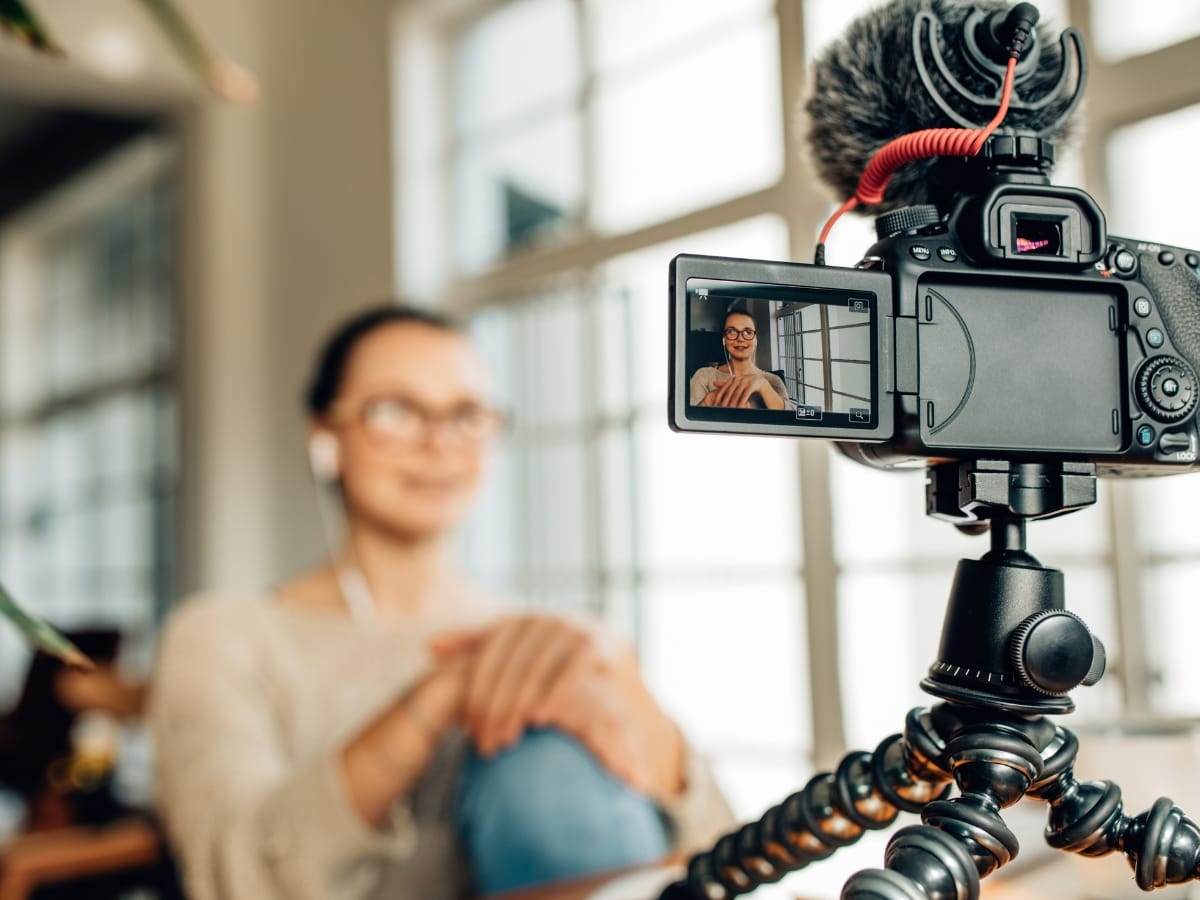Creating compelling video content is only half the battle—ensuring it reaches your target audience requires a strategic approach to search engine optimization. With video dominating online engagement and influencing search rankings, optimizing your content for platforms like YouTube and Google is essential for increasing visibility, driving traffic, and maximizing ROI. In this guide, we’ll walk you through the key steps to optimizing video content, from keyword research and compelling titles to transcripts, engagement metrics, and technical best practices, so you can enhance discoverability and connect with viewers who are actively searching for what you offer.
How Optimizing Video Content for Search Engines Boosts Views
What Is Video SEO and Why Is It Essential for Small Businesses?

Video SEO is the set of practices that make video content discoverable by search engines and platforms. It works by exposing descriptive metadata, transcripts, structured data, and engagement metrics that feed ranking algorithms. When titles, descriptions, thumbnails, transcripts, and schema are optimized, your video becomes easier to index and more likely to appear in search features like carousels and rich snippets. For small and local businesses, the key benefit is increased local visibility and higher conversion potential when video content shows up for geo-targeted queries and complements Google Business Profile listings. Recent research shows that pages with well-structured video content see better time-on-page and higher conversion lift when video matches search intent.
How Do Search Engines Crawl and Rank Video Content?
Search engines crawl video content by reading page-level metadata, parsing structured data like VideoObject, and indexing transcripts and captions as crawlable text. Platforms like YouTube also rely on engagement metrics to rank content. Transcripts provide literal keyword signals and context that search crawlers use to understand topic relevance, while titles and descriptions act as concise summaries that influence snippet text. Engagement metrics—watch time, retention, likes, and shares—serve as behavioral signals that platforms interpret as relevance and satisfaction, which in turn boost ranking. Understanding this flow—video asset → metadata/transcript → indexing → engagement signals → ranking—helps creators prioritize actions that increase both discoverability and viewer satisfaction.
What Are the Key Components of Video SEO?
Video SEO includes metadata optimization, structured data implementation, transcript/captions inclusion, hosting decisions, and distribution tactics that drive engagement and linking signals. Metadata covers titles, descriptions, tags, and thumbnails; each element helps search engines and users assess relevance before clicking. Structured data, such as VideoObject schema, provides explicit property mappings (title, thumbnailUrl, duration, uploadDate) that feed rich result eligibility in Google. Transcripts and captions create crawlable text and improve accessibility, while distribution and promotion (social, playlists, GBP) amplify engagement metrics that platforms favor.
How Does Video SEO Benefit Small and Local Businesses?
Video SEO benefits small and local businesses by increasing organic reach, enhancing trust through visual proof, and boosting conversions when video content answers local search intent with clear CTAs. Optimized videos can appear in Google local packs and video carousels, directing qualified traffic to service pages or Google Business Profile details that drive phone calls and store visits. A local bakery, for instance, that optimized demo videos and added transcripts saw improved local impressions and higher engagement on GBP and website pages. These gains translate into measurable lead lift when video content aligns with local keywords and is distributed across owned and social channels.
Optimizing Video Content for YouTube: Best Practices and Keyword Strategies

Optimizing video content for YouTube is about aligning what people are searching for with how the platform measures engagement. Success depends on keyword research, titles and descriptions that match viewer intent, strong thumbnails, and content that keeps people watching. YouTube’s algorithm rewards retention and relevance, so optimizing video content for both visibility and viewer satisfaction is essential. Playlists, end screens, and cards can further boost watch time by guiding viewers to related videos, increasing total session duration and overall channel authority.
What Tools and Techniques Work Best for YouTube Keyword Research?
Finding the right keywords starts with understanding how your audience searches. Use YouTube’s search bar to explore autosuggestions and related searches, which reveal real user phrasing. Study top-ranking videos to see what titles, tags, and formats perform best. Supplement this with SEO tools that show search volume, competition, and related long-tail terms. For local or niche creators, combining service-based keywords with location tags (for example, “guitar lessons in Denver”) can improve discoverability. Aligning each keyword with a clear intent—such as tutorials, reviews, or product demos—helps create videos that rank and convert more effectively.
How to Write SEO-Friendly YouTube Titles and Descriptions
An optimized video title should include your main keyword naturally while also offering a clear benefit or reason to click. Keep it concise and readable within search results. For example, a structure like “[Keyword]: [Specific Benefit or Result]” tends to perform well. Descriptions should expand on the title, summarizing the video in the first few sentences while using the target keyword once or twice. Add timestamps, resources, or relevant links later in the description to support longer watch sessions and improved SEO. Write in a conversational tone, focusing on clarity and viewer value rather than stuffing in keywords.
How Do Thumbnails, Tags, and Playlists Improve Video Performance?
Thumbnails act as the first impression and heavily influence click-through rate. A clear, visually engaging thumbnail with bold text and consistent branding helps videos stand out. It should match the tone and content of the video to build trust with viewers. Tags still provide context but play a smaller role than titles or descriptions. Include your main keyword and a few close variations for better categorization. Playlists, on the other hand, are powerful for audience retention. By organizing related videos, you encourage viewers to stay on your channel longer, which sends strong engagement signals to YouTube.
How to Use End Screens and Cards to Keep Viewers Engaged
Interactive features like cards and end screens help convert passive viewers into active participants. Cards can appear at key points in the video to link to related topics, while end screens highlight other videos or encourage subscriptions. Placing these elements in the final seconds of your video maintains viewer attention without disrupting the main message. Regularly reviewing analytics in YouTube Studio can show which placements and formats drive the most clicks. Over time, refining these elements can increase engagement and subscriber growth, ensuring your channel performs well both in search and recommendations.
Optimizing video content on YouTube is an ongoing process that blends strategy with creativity. By combining thoughtful keyword use, clear messaging, and strong visual presentation, creators can improve both discoverability and audience retention across every upload.
Optimizing Video Content for Google Video Search and Rich Results

Optimizing video content for Google Video Search involves technical and strategic steps that help your videos appear in carousels, snippets, and other enhanced search features. The foundation of this process lies in structured data, video sitemaps, and smart embedding practices. When these elements are implemented correctly, Google can better understand your videos, improving visibility and driving more qualified traffic to your site.
Structured data, specifically the VideoObject schema, allows search engines to identify and display key details about your videos, such as the title, thumbnail, duration, and upload date. A dedicated video sitemap helps Google discover every video across your domain, especially on pages that might otherwise be missed during crawling. Together, these tools increase your chances of appearing in video-rich results and featured carousels.
What Is Video Schema Markup and How Do You Implement It?
Video schema markup, or VideoObject, is structured data added to your web pages using JSON-LD format. It tells search engines exactly what your video contains by outlining details such as the name, description, thumbnail, upload date, and duration. This metadata helps Google understand the content and improves eligibility for rich results.
When adding VideoObject markup, ensure the information matches what is visible to users. Include additional properties like transcripts or interaction statistics to give Google more context about your video’s engagement and accessibility. Always validate your schema using tools like Google’s Rich Results Test or Search Console to confirm that the data is properly recognized and free of errors.
How to Create and Submit Video Sitemaps for Better Indexing
A video sitemap is an XML file that helps Google locate all video assets on your site. Each entry should include a title, description, thumbnail, and either the file URL or embed location. Optional tags like duration or view count can add further context. Once created, submit your video sitemap through Google Search Console. Regularly monitor the indexing report to ensure all your videos are being discovered. This is especially valuable for sites with many embedded or dynamically generated videos that might otherwise be missed during standard crawling.
What Are the Best Practices for Embedding Videos on Your Website?
Embedding videos correctly is key to both user experience and SEO performance. Use responsive players that adapt to different devices, and enable lazy loading so that videos don’t slow down page speed. Make sure Google can access your video files by avoiding blocked resources in your robots.txt.
Each video page should include crawlable text, such as a short description or transcript, which helps search engines understand the video’s topic. If the same video appears on multiple pages, use canonical tags to indicate the primary source and avoid duplicate content issues.
How Do Video Carousels and Featured Snippets Impact Visibility?
Google’s video carousel and featured snippet results give videos prime placement in search results, leading to higher engagement and click-through rates. Videos with accurate metadata, descriptive titles, and detailed transcripts have a better chance of being featured.
Relevance and engagement are major factors in how videos are ranked in carousels. Videos that quickly deliver useful information in the first 10 to 30 seconds tend to perform best. Keeping your metadata up to date and aligning it with search intent will help maintain visibility across Google’s video-rich results.
In today’s search landscape, optimizing video content is just as important as producing it. By combining technical precision with viewer-focused strategy, businesses can make their videos more discoverable, accessible, and effective in driving results.
What Video Content Strategies Work Best for Small Businesses?

For small businesses, optimizing video content is about combining creativity with consistency. The most effective strategies focus on trust-building formats, efficient production, and targeted distribution. Testimonial and case study videos build credibility by showcasing real customer experiences, while explainer videos clarify services and help reduce uncertainty for new buyers. Short clips work best for social media, where quick, visually engaging content captures attention and drives discovery. Planning a video calendar that includes a mix of long-form and short-form content helps maintain visibility across multiple platforms without straining production budgets.
Which Types of Videos Drive the Most Engagement and Conversions?
Certain video formats consistently outperform others because they address customer intent and make the buying process easier. Testimonial videos create a personal connection and build trust, making them ideal for audiences in the decision stage. Explainer videos simplify complex services, helping viewers understand what sets a business apart. Demo or how-to videos perform well because they show real applications, helping position your business as a helpful resource. When strategically placed on landing pages or social channels, these video types increase time on page, reduce bounce rates, and encourage conversions.
How to Plan and Repurpose Video Content for Maximum Reach
A strong content plan begins with creating a few pillar videos that tackle your most common customer questions. From those core videos, smaller clips, quote graphics, and written posts can be extracted to share across platforms. Transcripts can be turned into SEO-friendly blog articles or social captions, helping your content appear in both search and feed-based discovery systems. Using a content calendar ensures consistent posting, while templates simplify editing and distribution. This repurposing method allows small teams to stretch each production investment further while maintaining consistent visibility.
How to Target Your Audience Effectively with Video Content
Effective audience targeting begins with understanding intent. Some viewers are searching for information, while others are comparing options or ready to buy. Use YouTube for longer, informative videos that answer detailed queries, and short-form platforms like Instagram Reels or TikTok for fast engagement and discovery. For local audiences, include geographic terms in your titles, descriptions, and video tags to improve visibility in nearby searches. Analyze watch time, engagement, and comments to refine your approach and tailor future content to audience behavior.
Optimizing video content for small businesses is not about high-budget production but about alignment—matching video format, platform, and message to your audience’s needs. With a consistent schedule and data-driven improvements, even modest video efforts can build awareness, trust, and measurable business growth.
What Are the Technical Aspects of Video SEO You Must Know?

Technical video SEO covers hosting trade-offs, mobile responsiveness and page speed impacts, and advanced structured data types that extend discovery for clips, broadcasts, and tutorials. Hosting decisions determine discoverability, analytics access, and embedding control, while page performance influences both search ranking and viewer behavior. Advanced schema types like Clip, BroadcastEvent, and HowTo combined with VideoObject provide richer signals for episodic content and live events.
How to Choose the Right Video Hosting Platform for SEO?
Choosing a hosting platform involves balancing reach, control, analytics depth, and cost; YouTube offers unmatched discoverability, while platforms like Vimeo and Wistia offer more embedding control and privacy features, and self-hosting gives maximum control at the cost of performance and bandwidth. Consider whether platform indexing is desirable: hosting on YouTube can drive organic reach and backlink signals, whereas self-hosting centralizes traffic but may require a CDN to maintain page speed. Analytics requirements and integration with measurement tools also influence platform choice for data-driven optimization. Evaluate trade-offs against business goals—discovery versus control—before standardizing on a hosting strategy.
Below is a comparison table summarizing these platform trade-offs for straightforward decision-making.
| Platform | SEO Impact / Discoverability | Embedding Control & Analytics |
|---|---|---|
| YouTube | High discoverability and search indexing on the platform | Limited embed control; strong native analytics |
| Vimeo | Moderate discoverability; more brand-friendly embeds | Greater player customization and privacy controls |
| Wistia | Lower external discovery; strong site-focused features | Advanced analytics and conversion integrations |
| Self-hosting | Discoverability depends on site optimization | Full control but requires CDN and performance work |
How Does Mobile Responsiveness and Page Speed Affect Video SEO?
Mobile responsiveness and page speed directly affect search ranking and user retention; slow video loads increase bounce and reduce watch time, which harms ranking signals on both Google and hosting platforms. Implement responsive players that fit varied viewports, compress thumbnails and use modern image formats, and lazy-load heavy video assets to improve perceived performance. Core Web Vitals metrics such as Largest Contentful Paint and Cumulative Layout Shift are influenced by video placement and loading strategies, so prioritize techniques that minimize layout shifts and reduce initial payload. Optimizing video content performance preserves engagement metrics that feed ranking models.
What Advanced Structured Data Types Enhance Video SEO?
Advanced structured data—Clip, BroadcastEvent, and HowTo combined with VideoObject—extends discovery for episodic content, live streams, and tutorials by mapping specialized properties to search features. Use Clip schema to mark segments within longer videos, BroadcastEvent for live sessions with start times and status, and HowTo with VideoObject to provide step-by-step tutorial context that can appear in rich result formats. Each advanced type requires precise property values and testing in Search Console to ensure validity. Combining schemas enhances the knowledge graph connections between entities and improves eligibility for specialized SERP features.
How to Measure and Improve Your Video SEO Performance

Measuring video SEO success requires tracking discovery metrics (impressions, CTR), engagement metrics (watch time, average view duration, retention), and conversion metrics (leads, purchases), then iterating through testing and optimization cycles. Tools like YouTube Studio and Google Analytics provide platform- and site-level insights that must be correlated to understand full-funnel impact. Set targets for each KPI and run controlled A/B tests on thumbnails, titles, and early content to lift CTR and retention. A measurement plan turns qualitative learnings into repeatable improvements.
What Key Metrics Should You Track for Video SEO Success?
Essential video KPIs include impressions and click-through rate for discoverability, average watch time and retention for content relevance, and conversions (form fills, calls, purchases) for business impact; together they reveal both exposure and effectiveness. Impressions measure how often a video appears in search or suggested lists, while CTR indicates whether the title and thumbnail motivate clicks. Average watch time and audience retention show whether content satisfies viewers, and conversions map viewing to revenue or leads. For small businesses, focusing on improving CTR and the first 15–30 seconds of retention typically yields the largest conversion benefits.
These metrics should be tracked across platforms and aggregated for holistic analysis, which the following table helps structure.
| Metric | Description | Typical Tracking Tool |
|---|---|---|
| Impressions | Times video is shown in search/suggestions | YouTube Studio, Search Console |
| CTR | Percentage of impressions that lead to clicks | YouTube Studio, Analytics |
| Average Watch Time | Mean time viewers spend watching | YouTube Studio |
| Conversions | Actions taken after viewing (leads, purchases) | GA4, CRM integrations |
How to Use YouTube Studio and Google Analytics for Video Insights?
YouTube Studio offers channel- and video-level reports on traffic sources, retention curves, and engagement, while Google Analytics (GA4) captures site-level behavior for embedded videos and conversion events; combining both perspectives reveals where viewers drop off and which sources convert. Set up GA4 events to track play, pause, and completion on embedded videos and link these events to conversion funnels. Use retention graphs in YouTube Studio to identify points of audience drop-off for targeted edits, and analyze traffic sources to allocate promotion budget across search, suggested, and external referrers. Correlate retention improvements with conversion lifts to validate optimization hypotheses.
What Are Effective A/B Testing Methods for Video Elements?
Effective A/B tests for video elements compare single-variable changes—thumbnail, title, first 10–15 seconds, or CTA placement—over statistically meaningful durations to isolate the impact on CTR and retention. Define a clear hypothesis (e.g., a more descriptive thumbnail will increase CTR by X%), set evaluation metrics and duration, and use platform experiments or manual rotation to run tests. For YouTube, use staged uploads or thumbnail swaps and monitor early performance; for embedded videos, test different landing page metadata and hero placements. Analyze results against pre-defined thresholds and iterate quickly on winners to compound gains.
How Can Local Businesses Leverage Video SEO for Google Business Profile?

Local businesses can leverage video SEO on Google Business Profile (GBP) by uploading optimized short videos that showcase services, location, and offers with local keywords in titles and descriptions to improve local search visibility. Videos on GBP function as direct social proof and can influence local pack decisions by offering prospective customers immediate visual context that text cannot. Use geo-specific descriptors, include location shots or landmarks, and create short testimonial clips to build trust. When combined with local schema and optimizing video content for GBP, video assets strengthen signals that support local rankings and consumer actions.
Optimizing Video Content Specifically for Google Business Profile
Optimizing video content for GBP involves following file format and length recommendations, writing concise, location-rich titles and descriptions, and focusing content on services, location, and offers; this helps GBP surface videos for relevant local queries. Use short clips that load quickly and highlight key benefits, include local keywords in the first sentence of the description, and ensure the most important visual information appears in the first 5–10 seconds. Captioning or adding a transcript to the GBP post increases accessibility and local relevance. Regularly refresh GBP videos to signal activity and monitor GBP insights for engagement trends.
What Are the Best Practices for Geo-Targeting Video Content?
Geo-targeting video content means embedding place names, neighborhoods, and local landmarks in titles, descriptions, and transcripts so search engines associate the asset with geographic intent and local queries. Create playlists or collections by city or neighborhood, mention service areas explicitly within the transcript, and use location-specific timestamps when relevant. Cross-link videos from GBP and local landing pages to reinforce locality signals, and include local schema or structured data where appropriate. These practices increase the likelihood that videos surface for users searching with local intent.
How Do Video Testimonials Boost Local Search Visibility?
Video testimonials boost local search visibility by providing trust signals, authentic user experiences, and content that search engines can index for both brand and service-specific queries; they often lead to higher conversion rates when paired with local metadata. Structure testimonials with a clear problem-solution narrative, include local references (neighborhood, service location), and add VideoObject markup with review or interactionStatistic properties when possible. Distribute testimonials to GBP and social channels to amplify local engagement signals. For businesses seeking expert help to audit video assets and plan local implementation, Newman Web Solutions provides Marketing Services, social media marketing, and marketing automation that can turn video engagement into measurable leads and conversions, and they also offer a Free Marketing Strategy Session to evaluate video strategy and next steps.
Frequently Asked Questions About Optimizing Video Content

What role do video transcripts play in Video SEO?
Video transcripts are crucial for Video SEO as they provide search engines with crawlable text that enhances the understanding of the video’s content. By including a transcript, you improve the chances of your video being indexed for relevant keywords, which can lead to higher visibility in search results. Additionally, transcripts enhance accessibility for viewers who are deaf or hard of hearing, making your content more inclusive. They also allow users to quickly find specific information within the video, improving user experience and engagement.
How can I measure the success of my video SEO efforts?
To measure the success of your video SEO efforts, track key performance indicators (KPIs) such as impressions, click-through rates (CTR), average watch time, and conversion rates. Tools like YouTube Studio and Google Analytics can provide insights into how viewers interact with your videos. By analyzing these metrics, you can identify which videos perform well and which need improvement. Regularly reviewing these metrics allows you to refine your strategy, optimizing video content, and ultimately enhance viewer engagement and conversion rates.
What are the best practices for video file formats and sizes for SEO?
When optimizing video content for SEO, it’s essential to use widely supported file formats such as MP4, which balances quality and file size. Aim for a resolution of at least 1080p for clarity, but ensure the file size is manageable to avoid slow loading times. Compress videos without sacrificing quality to enhance loading speed, which is crucial for user experience and SEO. Additionally, consider using adaptive bitrate streaming to deliver the best quality based on the viewer’s internet speed, ensuring a smooth playback experience.
How often should I update my video content for SEO?
Regularly updating your video content is vital for maintaining SEO effectiveness. Aim to refresh your videos at least every 6 to 12 months, especially if they contain time-sensitive information or if your business offerings change. Updating can involve re-recording videos, adding new information, or optimizing video content metadata and descriptions. Frequent updates signal to search engines that your content is current and relevant, which can improve your rankings and visibility in search results, ultimately attracting more viewers.
What is the impact of social media on video SEO?
Social media significantly impacts video SEO by driving traffic and engagement. Sharing videos on platforms like Facebook, Instagram, and Twitter can increase visibility and encourage shares, which enhances organic reach. Engagement metrics such as likes, shares, and comments signal to search engines that your content is valuable, potentially boosting its ranking. Additionally, social media can help build a community around your brand, leading to more consistent viewership and interaction with your video content, which is beneficial for SEO.
How can I optimize video content for mobile users?
When optimizing video content for mobile users, ensure that your videos are responsive and load quickly on various devices. Use adaptive streaming to adjust video quality based on the user’s internet speed, and keep videos short and engaging to cater to mobile viewing habits. Additionally, include clear calls to action and ensure that any text is legible on smaller screens. By prioritizing mobile optimization, you enhance user experience, which can lead to higher engagement and improved SEO performance.
What are the benefits of using video in email marketing?
Incorporating video into email marketing can significantly boost engagement rates. Videos can increase click-through rates by making emails more visually appealing and interactive. They also allow you to convey complex information quickly and effectively, which can enhance the recipient’s understanding of your message. Additionally, videos can create a more personal connection with your audience, fostering trust and encouraging conversions. By using video in your email campaigns, you can improve overall engagement and drive more traffic to your website or landing pages.
Conclusion
Optimizing video content for search engines is no longer optional—it’s essential for cutting through the noise and reaching your target audience effectively. By implementing strategic SEO practices, you can dramatically increase your visibility, engagement, and conversion rates. At Newman Web Solutions, we specialize in crafting data-driven video SEO strategies that help your content rank higher and perform better. Ready to maximize your video’s impact? Call (404) 301-9189 or schedule your free 30-minute strategy session today—and let us help you turn views into valuable business results.





